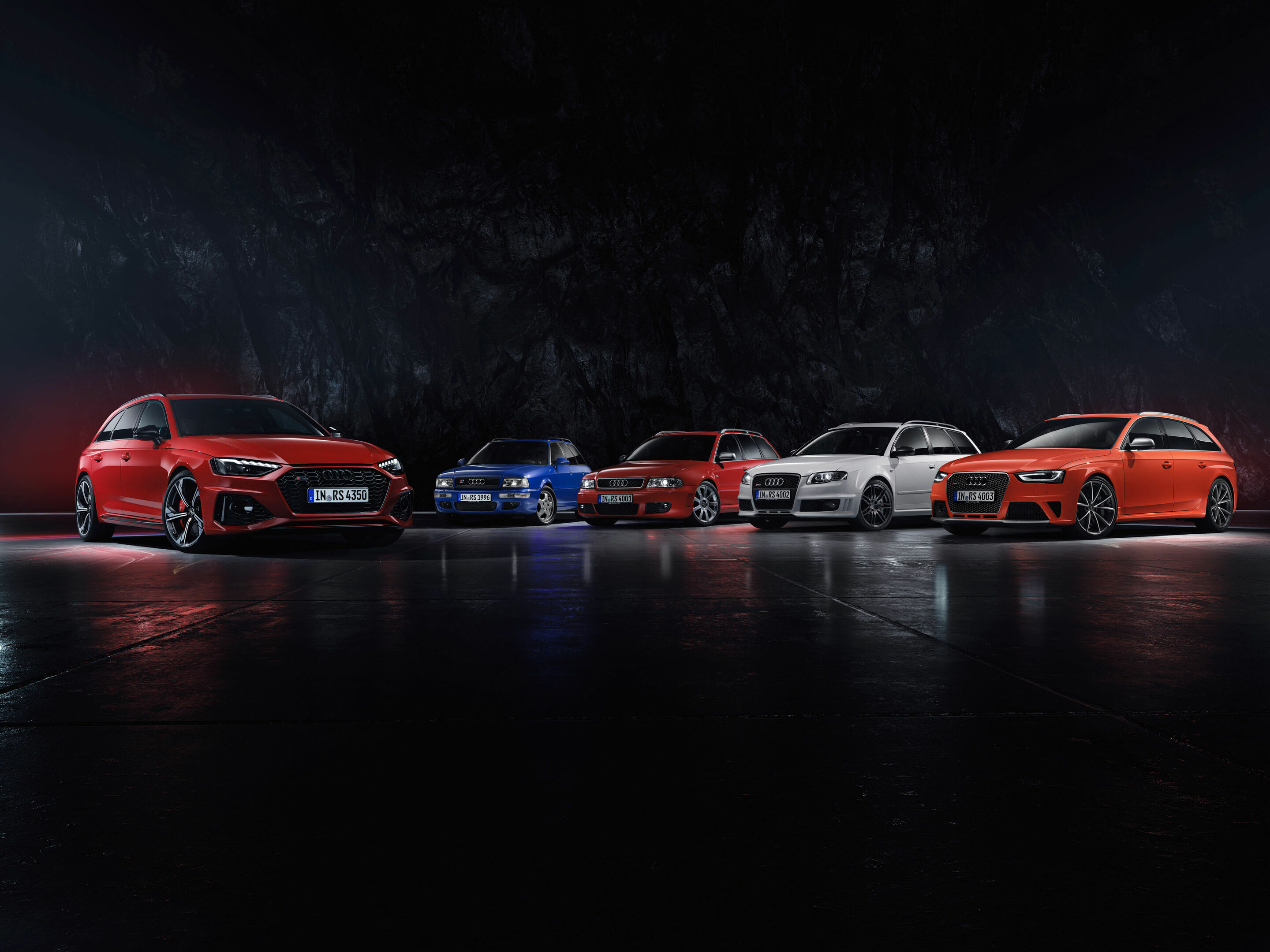Like no other, the new Audi RS 4 Avant stands for the combination of high performance and everyday usability. Its line of ancestors dates back a full 25 years, to 1994, when the legendary RS 2 Avant was released.
1994 – Audi RS 2 Avant: Strong trendsetter
Audi set a strong trend with the RS 2 Avant in 1994: It was the world’s first high-performance sports car with five seats and a large luggage compartment. The distinctive exterior design and the elegant interior with its two-color look and blue Alcantara seats also helped shape the style. The five-cylinder turbo squeezed 232 kW (315 PS) out of 2.2 liters of displacement, accelerated the Audi RS 2 Avant from a standstill to 100 km/h (62 mph) in 5.4 seconds, and reached a top speed of 262 km/h (163 mph). Porsche AG supplied parts such as brakes and wheels in its capacity as development and production partner.
1999 – Compact displacement and high performance in the first generation
Cosworth Technology Ltd, which was integrated into the company shortly before, came into the picture as a cooperation partner for the first RS 4 Avant. Together with quattro GmbH, the English company made the 2.7-liter twin-turbo V6 with 279 kW (380 PS) even more powerful and torquey. The intake and exhaust ports were revised in accordance with the performance increase, the cross-sections of the air ducting on the intake and thrust sides was increased, and the dimensions of the turbochargers were also expanded.The efficiency was improved considerably thanks to larger intercoolers that were optimized for pressure loss. The RS 4 was thus designed for pure sportiness without sacrificing any of its everyday usability. It was in such high demand that Audi doubled the originally planned production figures.
2005 – Audi RS 4: Dynamics in three variants
The second-generation RS 4 was launched in 2005. It was first released as a sedan and Avant and was later also available as a cabriolet. In terms of drive, it was equipped with the newly developed high-revving V8 engine with 4.2 liters of displacement. The direct injection engine had an output of 309 kW (420 PS). This was the first time that a manufacturer relied on the combination of gasoline direct injection and the high-engine-speed concept, which was derived from motorsports. This allows engine speeds of up to 8,250 rpm to be reached. Further technology highlights included the quattro drive with the asymmetrical dynamic torque distribution at a ratio of 40 percent at the front and 60 percent at the rear, which was new at the time, and the optional carbon fiber ceramic brakes.
2012 – Audi RS 4 Avant: The dynamic all-purpose vehicle
In February 2012, quattro GmbH presented the third generation of the RS 4, which was offered as an Avant exclusively, at the Geneva Motor Show. Just like its predecessor, the model was equipped with a 4.2 l V8 high-revving engine but with an increased output of 331 kW (450 PS).
The equipment, data and prices specified in this document refer to the model range offered in Germany. Subject to change without notice; errors and omissions excepted.
